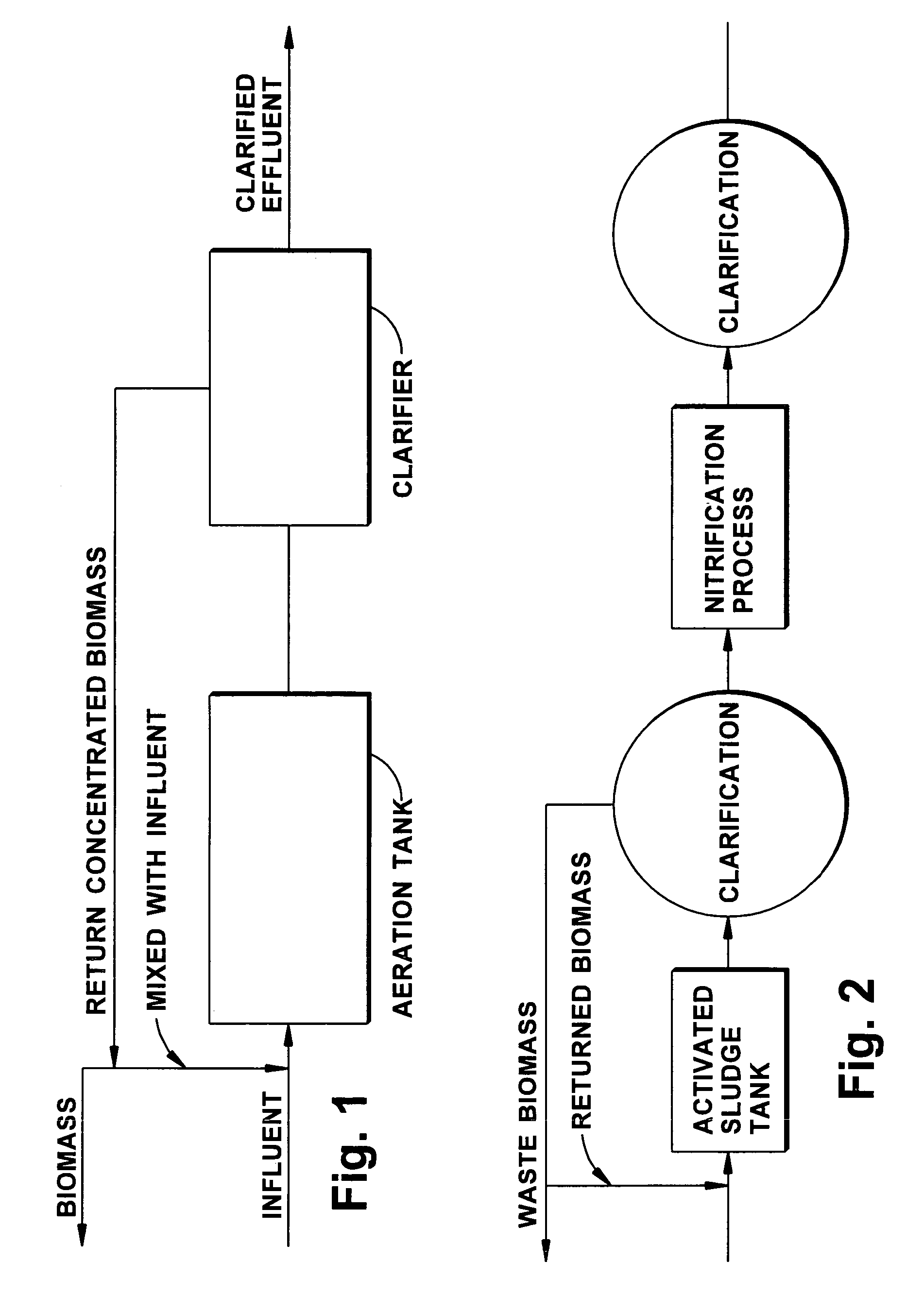Nitrification system and method
a nitrification system and nitrification technology, applied in the direction of filtration separation, multi-stage water/sewage treatment, separation process, etc., can solve the problems of low cell yield, low reliability of current nitrification technology in the conventional activated, and ammonia toxic to aquatic life forms at rather low concentrations, so as to reduce ammonia and enhance nitrification effect, increase the resistance of fluid flow, and reduce the effect of ammonia
- Summary
- Abstract
- Description
- Claims
- Application Information
AI Technical Summary
Benefits of technology
Problems solved by technology
Method used
Image
Examples
Embodiment Construction
[0039]Conventional methods of reducing ammonia levels in sewage include biological treatment, chemical treatment using an ammonia stripping method, an ion exchange method, and / or chlorine dosing. Among these, biological treatment is most widely utilized due to its efficiency, economy, and easy maintenance.
[0040]The biological conversion of ammonia to nitrate, or nitrification, is described above, and as follows: ammonia is converted to nitrite (as typified by Nitrosomonas) by NH4+3 / 2O2→NO2−+H2O→2H+ and then nitrite to nitrate (by Nitrobacter) by NO2−+1 / 2O2→NO3−. Nitrifying bacteria (like Nitrosomonas and Nitrobacter) are sensitive organisms and extremely susceptible to a wide variety of inhibitors. From both laboratory studies and the operation of full-scale plants, the following factors have been determined to affect a nitrification process: 1) concentration of ammonia and nitrite; 2) BOD / TKN ratio; 3) dissolved oxygen concentration; 4) temperature; and 5) pH. A variety of organic ...
PUM
| Property | Measurement | Unit |
|---|---|---|
| concentrations | aaaaa | aaaaa |
| temperature | aaaaa | aaaaa |
| concentration | aaaaa | aaaaa |
Abstract
Description
Claims
Application Information
 Login to View More
Login to View More - R&D
- Intellectual Property
- Life Sciences
- Materials
- Tech Scout
- Unparalleled Data Quality
- Higher Quality Content
- 60% Fewer Hallucinations
Browse by: Latest US Patents, China's latest patents, Technical Efficacy Thesaurus, Application Domain, Technology Topic, Popular Technical Reports.
© 2025 PatSnap. All rights reserved.Legal|Privacy policy|Modern Slavery Act Transparency Statement|Sitemap|About US| Contact US: help@patsnap.com



